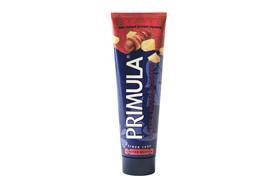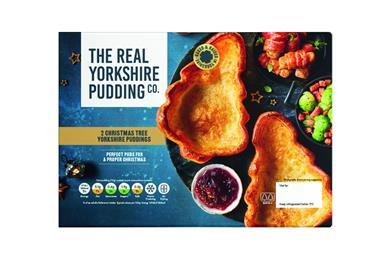Learning not to Scotch its future
The Scotch whisky industry is beginning to address decline with an awareness that a traditional and aloof approach just won't do in a drinks sector alert to young consumers and vibrant with new PPS offerings. Tim Palmer reports
The slow but steady long-term decline of the blended Scotch whisky market in the UK has seemed impossible to turn around, and trade and consumers tended to sideline the category.
But there are some promising signs that the potential for growth is still there and that attitudes are beginning to change.
In part, the industry has itself to blame for insisting on stressing the traditional elements of the products, for creating market share by cutting price, and by assuming everyone will drink Scotch in the end.
In international markets, which account for the bulk of Scotch sales, the traditional message can be critical, but in the UK the emphasis is slowly changing.
Peter Wilson, Jim Beam Brands' international marketing manager, says: "The industry has been too particular and aloof and has been prescribing how people should drink and serve its products, and this is beginning to change to an attitude of it doesn't matter how you drink it, as long as you do'." This is a reflection of what is already taking place in other markets such as Spain and Greece where whisky is drunk with Coke and other mixers and the main consumers are much younger.
Wilson makes the point that in the UK the industry seems to make the assumption that consumers will reach a certain age and magically turn to whisky, which they will drink straight or with a dash of water.
"You can't assume that someone who is 20 now will act the same as today's 40-year-olds in 20 years' time. The assumption they will grow into Scotch is not necessarily right.
"Consumption patterns have changed with the growth of wine and the introduction of premium packaged spirits. Products like bourbon are gaining popularity because they are always being mixed."
Wilson says the plan with JBB's Whyte and Mackay standard blend is to keep its traditional drinkers and introduce new drinkers and tell them to drink it with Coke.
"We have got to do something. If we don't the market will keep declining."
The volume of the UK Scotch market is declining by over 2%, but in Scotland it has been growing by 5%. This has been helped by above the line investment. JBB has backed Whyte and Mackay with a TV campaign which will go on the air again later this year and be moved into England within two years.
Mould breaking poster campaigns have also been run by smaller operations such as Morrison Bowmore for its Islay single malts and Burn Stewart in an effort to put some life into the market.
Alison Winship at Burn Stewart is attempting to build Scottish Leader into a credible force on a very tight budget. It has run a number of quirky poster ads in its Scottish heartland which have increased awareness disproportionately.
By developing the brand the company hopes to reduce its dependence on own label.
A fresh approach to advertising has also been taken for the market leaders The Famous Grouse and Bell's. Highland Distillers has developed its Grouse icon into a major campaign and Guinness UDV has brought in jazz musician Jools Holland to freshen up Bell's image.
Guinness UDV has much at stake. It owns 28 distilleries in Scotland and its worldwide brand leaders include J&B and Johnnie Walker Red and Black. Bell's is the number one brand in the UK and England and the number four in Scotland. In the UK it is worth £65m and is growing at 10% according to sales director Steve Gannon.
"The ads have made a significant difference to the attitude towards Bell's and these have been backed up by well supported activity in store. This has been primarily on price and has driven the litre size. The multiples' spirits performance is looking good. They are now looking to repeat the millennium numbers year on year and capitalise on the opportunities which have been created."
{{Z SUPPLEMENTS }}
Close menu
- Home
- Retail & Wholesale
-
Products & Suppliers
- Back to parent navigation item
- Products & Suppliers
-
Product Categories:
- Back to parent navigation item
- Product Categories:
- Alcoholic drinks
- Bakery
- Cereals & breakfast
- Cheese
- Chicken & poultry
- Chocolate
- Confectionery
- Crisps, nuts & snacks
- Dairy
- Fish
- Fresh produce
- Frozen
- Household
- Meat
- Own Label
- Sauces & condiments
- Seasonal
- Soft drinks
- Vaping
- Vegan & plant-based
- World foods
- Suppliers
- People
- Reports & Data
-
Topics A-Z
- Back to parent navigation item
- Topics A-Z
-
Popular topics:
- Back to parent navigation item
- Popular topics:
- Cost of living crisis
- Crime
- Deposit Return Schemes
- Finance
- Government & Regulation
- Health
- Inflation
- Loyalty
- Marketing
- Mergers & Acquisitions
- New Product Development
- Sourcing
- Supply chain
- Sustainability & environment
- Technology
- Ultra Processed Foods
- Vaping
- A-Z all topics
- Content by type:
- Events
- Ask iA (beta)
- Subscribe now
Sign in to comment on this article
Not logged in before? Register for FREE guest access today.
You will be able to:
- Read more stories
- Receive daily newsletters
- Comment on stories
Advert













No comments yet